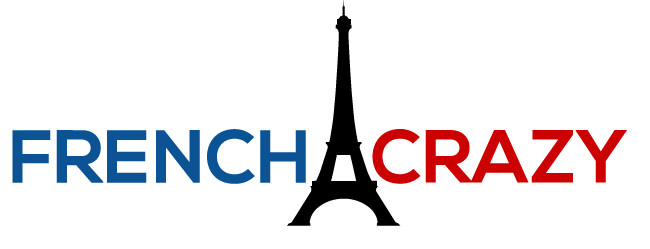Liaisons and linking are two concepts which characterize the French language. English speakers stand out as foreigners partly because of the lack of liaisons. Liaisons and linking (enchaînement) help smooth out French words and distinguish different words.
Here we explain how French flows with the tendency to end syllables with vowels.
This article has some linguistic concepts and is more suited for an intermediate learners . I would recommend reading this article on general pronunciation as well, to give yourself a stronger foundation with French phonetics and pronunciation.
What is linking?
Unlike liaisons, linking (l’enchaînement) is strictly a phonetic concept and it is very prevalent in French. It involves taking the final consonant of one word and adding it to the first syllable of the second word WHEN the following two conditions are met:
1. The first word ends in a final consonant (pronounced orally)
Le premier mot se termine par une consonne finale (orale)
2. The second word starts with a vowel.
Le deuxième mot commence par une voyelle.
Other examples?
seize heures –> /se zœ ʀ/
onze oiseaux –> /õ zwa zo/
par avion –> /pa ʀa vj õ/
mort ou vif –> /mɔʀ tu vif/
One Problem with linking?
[Warning! This paragraph contains linguistic jargon. Skip if desired.]
Linking redistributes consonants from one word to another. It can also change the timbre of vowels. For example, when pronounced alone, the French word for “with” – avec has the /k/ sound at the end of it. Phonetically transcribed, it is /a vɛk/. Due to being a closed syllable, you have the vowel /ɛ/ which sounds like “eh” (if you need help with phonetic transcriptions, check out this article). HOWEVER once you have the phrase avec Olivier the transcription changes. The /k/ sound moves to the start of the name “Olivier”, creating an open syllable and changing the vowel in avec from an /ɛ/ to an /e/ (the “ay” sound). Your new transcription looks like /a ve kɔ li vje/.
What are French Liaisons?
If you thought linking was difficult, then liaisons are harder to understand. In French, liaisons rely on phonetic, lexical, syntactic and stylistic factors. Linking only relies on phonetic concepts. A liaison is the obligatory or optional pronunciation of a latent consonant. A latent consonant, is a consonant that is not pronounced when the word is alone, BUT has the ability to become pronounced when placed in a liaison context.
Which consonants could receive a liaison?
The /Z/ sound – written as an s, z, or x. (trois‿ateliers sounds like twa Za tay lee ay)
The /T/ sound – written as a t or a d. (c’est‿ici sounds like say Tee see)
The /N/ sound – written as an n. (en plein‿air sounds like on pleh Nair)
The /R/ sound – written as an r.
The /P/ sound – written as a p.
The /G/ sound – written as a g.
The 7 “obligatory” rules for liaison usage.
I will not go through every rule because it will get too complicated. But here are some examples:
Between a nominal-group (a bunch of words used to represent an entity).
Examples: mes‿étudiants, ces‿animaux,
Syntactic Confusion?
Prends‿en /prɑ̃ zɑ̃/ = REQUIRES LIASON (‿)
Prends##un livre / prɑ̃ ɛ̃ livʀ/ = FORBIDS LIASON (##)
Not surprisingly, liaisons are in the process of disappearing in French. Their usage is becoming used less and less with the new generations. The reason for this is because they are not easily defined by formal rules and are sometimes optional.
In French, a “liaison” is when a normally silent consonant at the end of a word is pronounced at the beginning of the word that follows it.
Usually, liaisons are required between two words when the first one ends with a consonant (ex: “es”) and the second one starts with a vowel (ex: “un”). They are also required when the second word starts with a “mute H” (ex: “honnête” which means “honest”).
Stay cautious, consonants within a liaison sometimes change pronunciation. For example, we pronounce an S like a Z when it is in a liaison.
ex: “Tu es un garçon” means “You are a boy”, and is pronounced like “Tu es-Z-un garçon”
ex: “Tu es honnête” means “You are honest”, and is pronounced like “Tu es-Z-honnête”
The pronunciation (or not) of liaisons follows specific rules. Liaisons are divided into three categories:
Required liaisons?
There are many cases, but here are a few examples:
In nominal groups: “un homme” (pronounced “un-N-homme”), “les amis” (pronounced “les-Z-amis”)
In verbal groups: “vous avez” (pronounced “vous-Z-avez”), “ils ont” (pronounced “ils-Z-ont”)
etc.
Forbidden liaisons?
There are many cases, but here are a few examples:
After a singular noun: “un garçon intéressant” (you should not say “un garçon-N-intéressant”)
After “et” (and): “un homme et une femme” (you should not say “un homme et-T-une femme”)
Before a “h aspiré”: “les haricots” (you should not say “les-Z-haricots”).
Optional liaisons?
There are many cases, but a case of optional liaison is after verbs that are not followed by a pronoun: “L’enfant prend un sucre.”
You can either say “L’enfant prend un sucre” or “… prend-T-un sucre.”
If you have any questions, please let us know below.




In the novel Pythagora, je t’adore” (in French) the author used these two words; z’ont in a sentence, “Y z’ont . . . and z’avez.. I assume the “z” is an liaison character. But why use z for French speakers? Surely they’d know how to pronounce words in their own language.
why do we have liason in DES AMIS?
I don’t think “sept’ and “ces” are the same vowel sound.
No they are not, sept = /ɛ/ and ces = /e/
Honestly : Most of the “liaisons” are not obligatory, or even a necessity for being understood. In fact it’s just a way of speaking which is more elegant or grammaticaly correct if you need to. In daily life we just don’t give attention to that (with the exception for the forbidden liaisons). Plus we have in France a lot of several locals accents that are all wrong with some rules at some point. The most notable exemple could be that the people from the South-West pronounce some “s” that must be mute, like with the word “moins”. So yes, we don’t even care with our locals, that’s why you have no reason to be worried about that if you are coming from another country. Unless you discuss with a snob…